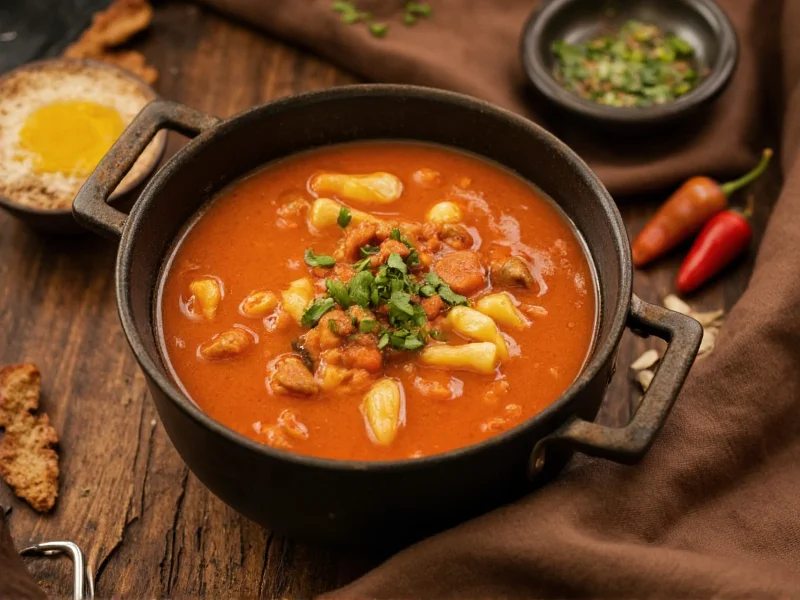Al Yeganeh, the authentic Soup Man, built a culinary empire from a humble soup cart on New York's Upper East Side. His story represents one of the most fascinating intersections of food culture and pop culture in modern American history. Unlike the exaggerated 'Soup Nazi' portrayal, the real Soup Man developed a devoted following for his consistently excellent soups and distinctive no-nonsense approach to customer service.
The Origins of New York's Soup Man
Al Yeganeh arrived in New York City from Iran in the 1970s, bringing with him traditional soup-making techniques that would eventually define his business. In 1984, he launched his first soup cart at 55th Street and Third Avenue, offering just a few varieties of soup made from scratch each day. What set him apart wasn't just the quality of his recipes, but his strict rules for customers: no talking while waiting in line, no substitutions, and absolutely no complaints about the service.
Yeganeh's commitment to quality control was legendary. He personally supervised every batch of soup, often rejecting pots that didn't meet his exacting standards. This dedication to culinary excellence, combined with his distinctive personality, created a unique dining experience that attracted both loyal regulars and curious newcomers. The line at his cart became a New York institution, with customers willing to endure his strict rules for a bowl of his renowned chicken soup or borscht.
From Street Cart to Cultural Phenomenon
The Soup Man's rise to fame accelerated dramatically in 1995 when Seinfeld creators Jerry Seinfeld and Larry David visited his cart. They were reportedly inspired by Yeganeh's exacting service standards to create the iconic 'Soup Nazi' character for the show's seventh season. The episode, titled 'The Soup Nazi,' became one of the series' most memorable installments, introducing phrases like 'No soup for you!' into the American lexicon.
Ironically, the massive popularity generated by the Seinfeld episode nearly destroyed Yeganeh's business. The sudden influx of celebrity-seeking customers overwhelmed his small operation, and his strict rules led to numerous confrontations. Yeganeh felt the portrayal was unfair and damaging to his reputation, eventually filing a lawsuit against Seinfeld and NBC. Though the case was settled out of court, Yeganeh remained bitter about the association for years.
| Year | Milestone | Business Impact |
|---|---|---|
| 1984 | Opened first soup cart | Established reputation for quality |
| 1995 | Seinfeld 'Soup Nazi' episode aired | Massive customer surge followed by operational challenges |
| 1996 | Lawsuit against Seinfeld settled | Received financial compensation but remained publicly critical |
| 2004 | Launched nationwide retail line | Expanded beyond NYC locations |
| Present | Maintains NYC locations | Continues serving signature soups with original standards |
Business Evolution and Current Status
Despite the challenges following the Seinfeld episode, Yeganeh transformed his business into a sustainable enterprise. He opened his first brick-and-mortar location in 1999, maintaining the same quality standards that defined his street cart operation. The Soup Man brand eventually expanded to multiple New York locations and launched a successful line of frozen soups sold in grocery stores nationwide.
Today, Soup Man locations continue to operate in New York City, offering the same core menu that made Yeganeh famous. Customers can still experience the distinctive service style that became legendary, though Yeganeh himself has gradually stepped back from day-to-day operations. The business maintains its reputation for high-quality, made-from-scratch soups using recipes that haven't changed significantly since the early days.
What Makes Soup Man's Recipes Special
Food historians and culinary experts point to several factors that distinguish Soup Man's approach from typical commercial soup operations. First, Yeganeh始终坚持 using fresh ingredients rather than pre-made bases or concentrates. His chicken soup, perhaps the most famous item, uses whole chickens simmered for hours to extract maximum flavor.
Second, the portion sizes reflect traditional Middle Eastern serving styles rather than American commercial standards. A bowl of soup at Soup Man is substantial enough to serve as a complete meal, reflecting Yeganeh's belief that soup should be satisfying and nourishing.
Third, the preparation process follows time-intensive methods that many commercial operations have abandoned. Stocks are made from scratch daily, vegetables are cut by hand, and each batch is carefully monitored for quality. This commitment to traditional preparation methods explains why regular customers remain loyal despite the higher prices compared to fast food alternatives.
Visiting a Soup Man Location Today
For visitors seeking an authentic Soup Man experience, understanding the established protocols enhances the visit. The most popular locations remain in Midtown Manhattan, particularly the original site near 55th Street. While lines have shortened since the Seinfeld frenzy, arriving during off-peak hours ensures a smoother experience.
Customers should familiarize themselves with the established ordering process: approach the counter, state your soup selection clearly, and pay before receiving your meal. Attempting to make special requests or substitutions typically results in the famously curt response that became part of New York folklore. The most popular offerings include the classic chicken soup, borscht, and split pea soup, each prepared according to Yeganeh's original recipes.
Cultural Legacy Beyond the Soup Pot
The Soup Man's influence extends far beyond New York's food scene. His story represents a classic immigrant success narrative, demonstrating how dedication to craft can transform a simple street cart into a cultural institution. Food critics credit Yeganeh with helping elevate soup from a humble side dish to a respected culinary category worthy of artisanal treatment.
Moreover, the Soup Man phenomenon sparked broader conversations about customer service standards and the balance between quality control and customer satisfaction. Many modern food entrepreneurs cite Yeganeh's uncompromising approach as inspiration for maintaining high standards despite commercial pressures.











 浙公网安备
33010002000092号
浙公网安备
33010002000092号 浙B2-20120091-4
浙B2-20120091-4